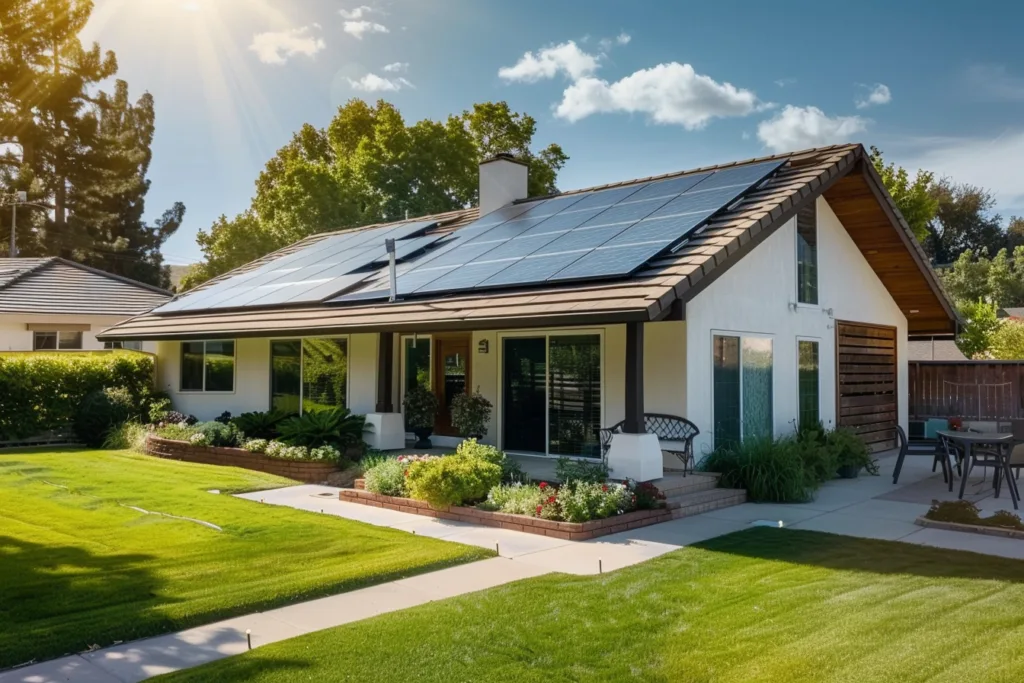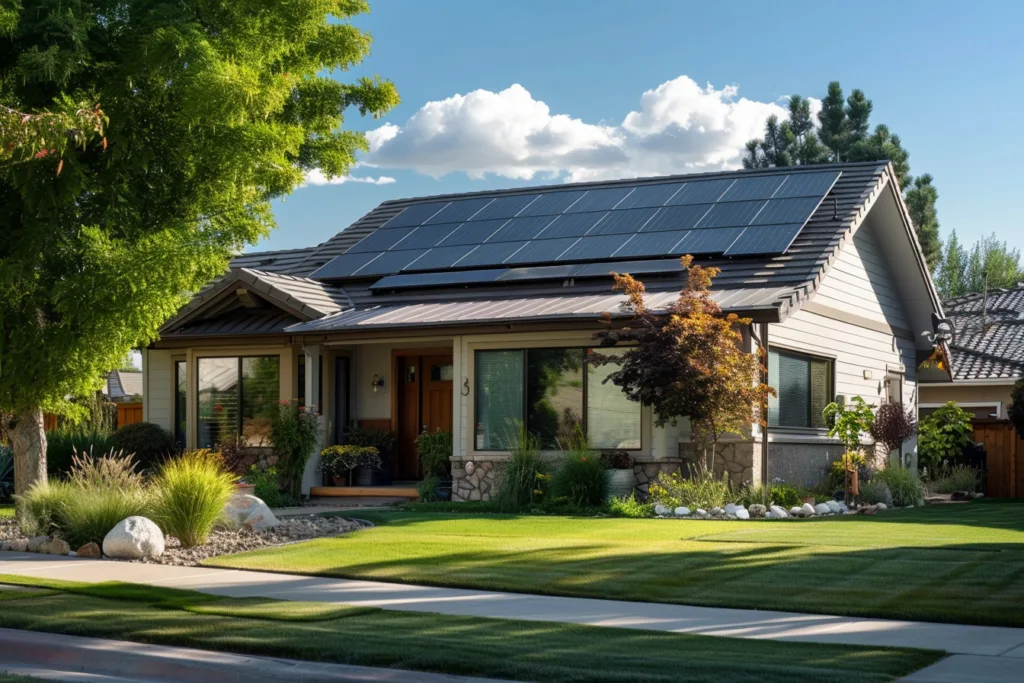Solar roofs significantly enhance a home’s energy efficiency by harnessing sunlight to generate electricity, thereby reducing reliance on traditional power sources. This shift leads to lower utility bills and decreases the environmental impact of fossil fuels. Homeowners can benefit from government incentives and rebates, which can offset the initial installation costs and make solar technology more accessible.

Solar panels convert sunlight directly into electricity through photovoltaic cells. This renewable energy can power various home appliances and systems, reducing the need for grid electricity. Battery storage systems can store surplus energy for use during periods when sunlight is not available, ensuring a constant power supply.
Solar roofs integrate seamlessly with modern architectural designs, maintaining the aesthetic appeal of homes. They also act as a protective layer, increasing the lifespan of the actual roof underneath. With advancements in solar technology, efficiency continues to improve, making it a viable option for a wide range of climates and geographic locations.
Benefits of Solar Roofs
Solar roofs offer significant energy efficiency improvements by utilizing renewable energy and enhancing home insulation. They also contribute positively towards environmental sustainability and provide long-term cost savings.
Renewable Energy Generation
Solar roofs harness sunlight to generate electricity. This reduces dependence on non-renewable energy sources like coal and natural gas. The professional installation of these systems ensures optimal panel placement, maximizing sunlight exposure.
Efficiency depends on several factors, including roof orientation and shading. Professional roofing solutions can assess these conditions to optimize energy production. By generating electricity on-site, households can reduce their carbon footprint and increase energy independence.
Energy Efficiency and Insulation
Apart from generating power, solar roofs add an extra layer of insulation. This helps maintain stable indoor temperatures, reducing heating and cooling needs. In winter, solar roofs can retain heat, while in summer, they reflect sunlight, keeping interiors cooler.
Professional roofing solutions can improve the energy efficiency of homes by ensuring proper installation. This addition leads to decreased energy consumption from HVAC systems, contributing to lower utility bills.
Sustainability and Environmental Impact
Solar roofs are a sustainable energy solution, reducing reliance on fossil fuels. Each kilowatt-hour of solar energy used translates into a reduction in greenhouse gas emissions. Solar roofs help lower air pollution and decrease the environmental footprint of homes.
By embracing solar roofs, households contribute to global efforts to combat climate change. Professionals in roofing can provide insights into the best materials and techniques to maximize environmental benefits.
Cost Savings Over Time
Initial installation costs for solar roofs can be high, but long-term savings are substantial. Solar roofs provide energy savings by reducing electricity bills. The payback period depends on several factors such as energy consumption and local utility rates.
Additionally, many regions offer incentives, such as tax credits and rebates, which can offset initial costs. Professional roofing solutions often help homeowners navigate these financial incentives, contributing to higher return on investment.

Implementation of Solar Roofs
Solar roofs enhance a home’s energy efficiency by utilizing photovoltaic cells to convert sunlight into electricity. This technology’s effectiveness depends on various factors including the types of materials used, the suitability of the home, and the installation process.
Understanding Solar Roof Technology
Solar roofs integrate solar panels seamlessly within roofing materials. Photovoltaic (PV) cells, typically silicon-based, capture sunlight and convert it into electrical energy. Monocrystalline and polycrystalline are the most common types of PV cells. Monocrystalline cells are more efficient but also more expensive.
Solar shingles are designed to blend with traditional shingles, offering aesthetic benefits. Energy storage systems, often paired with solar roofs, store excess energy for later use. This technology requires professional assessment for optimal performance.
Comparison with Traditional Roofing Materials
Traditional roofs consist of materials like asphalt, wood, and metal. They serve basic purposes such as protection from weather but do not produce energy. Solar roofs, on the other hand, combine protection with energy generation, leading to potential savings on energy bills.
The installation cost of solar roofs can be higher than traditional roofs. However, they offer long-term benefits like reduced energy costs and lower environmental impact. Solar roofs also often qualify for tax incentives and rebates.

Evaluating Home Suitability
Assessing if a home is suitable for solar roofs involves several factors. The roof’s orientation and tilt significantly impact energy production. South-facing roofs generally receive the most sunlight. Additionally, the condition of the existing roof and structural integrity are crucial considerations.
Shading from nearby trees or buildings can reduce efficiency. Climate also plays a role; areas with consistent sunlight are ideal. Building codes and local regulations must be reviewed to ensure compliance. Professional evaluation helps in making informed decisions.
Installation Process
The installation process of a solar roof involves multiple steps. Initially, a professional assessment is conducted to evaluate roofing conditions and energy needs. Necessary permits are then obtained. The old roofing material may need to be removed before installing the new solar roof.
Mounting systems and PV cells are installed next, followed by the connection of inverters and energy storage systems. After installation, rigorous testing ensures proper functionality. Professional roofing solutions often offer maintenance contracts to ensure longevity and performance.
Maintenance and Durability
Maintenance of solar roofs is relatively minimal but crucial for long-term performance. Regular cleaning, especially for dust and debris, ensures optimal energy absorption. Inspecting for physical damage and ensuring electrical connections are secure is important.
Solar roofs are designed to be durable, often lasting 25-30 years. High-quality materials and proper installation enhance longevity. Some professional roofing solutions offer warranties that cover equipment and installation, providing peace of mind and protecting the investment.
